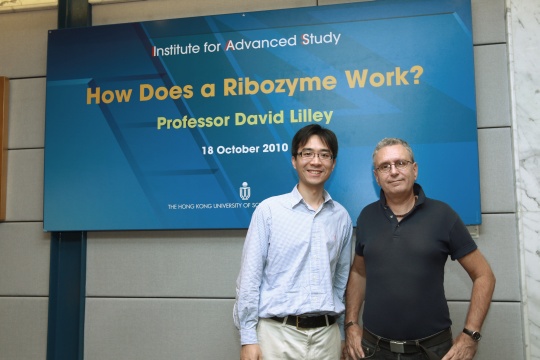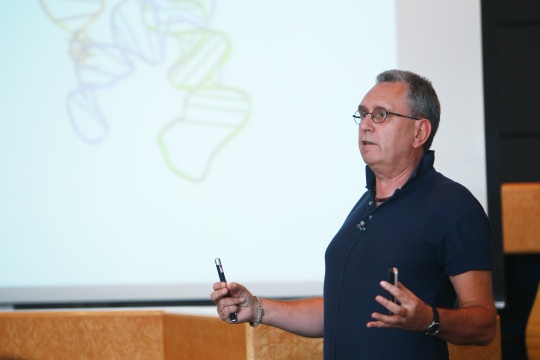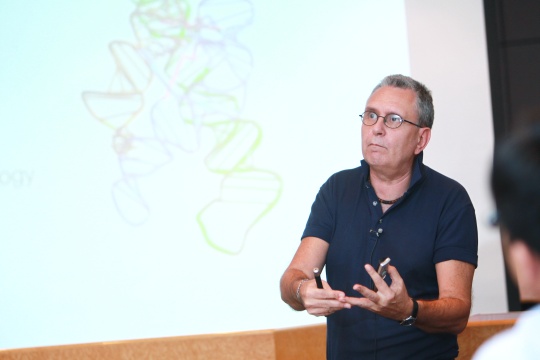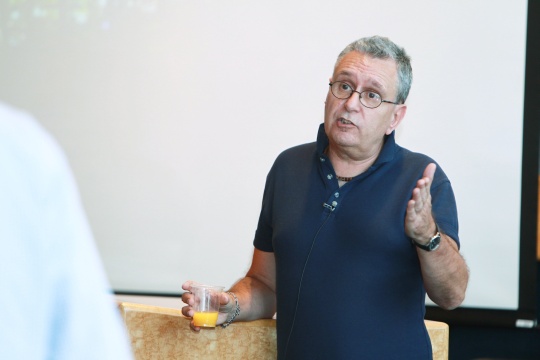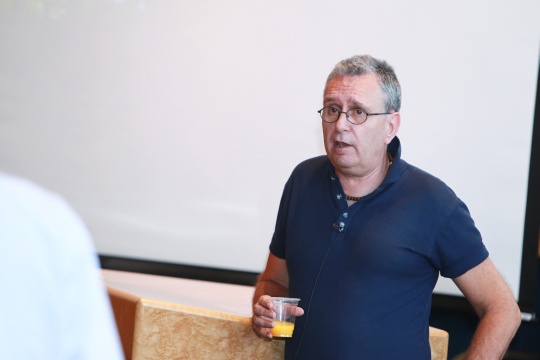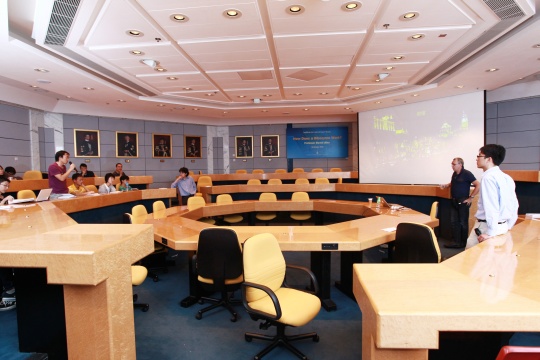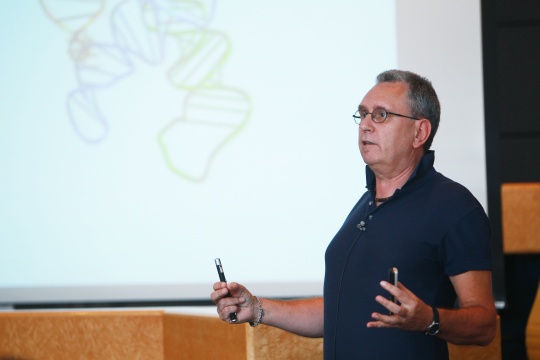How Does a Ribozyme Work?
Abstract
The nucleolytic ribozymes catalyse site-specific phosphodiester cleavage and ligation transesterification reactions in RNA. The Varkud satellite (VS) ribozyme is the largest of the nucleolytic ribozymes. In the absence of a crystal structure we have determined the solution structure of the complete ribozyme using small-angle X-ray scattering. The substrate stem-loop docks into the tertiary fold of the ribozyme, where it makes an intimate interaction with the A730 loop, containing the nucleotide A756 which we have found to be important to the function of the ribozyme. A guanine (G638) within the substrate loop of the VS ribozyme also plays a key role in the catalytic activity. Replacement by any other nucleotide result in severe impairment of the cleavage reaction, yet folding of the substrate is not perturbed. Moreover, variant substrates such as G638A bind the ribozyme with similar affinity, acting as competitive inhibitors. We have found that the pH dependence of the ribozyme cleavage reaction is consistent with general acid-base catalysis involving G638 and A756. 5’ phosphorothiolate substitution experiments indicate that G638 is the general base and A756 the general acid for the cleavage reaction. General acid-base catalysis seems to be the basis of all the nucleolytic ribozymes. We show that the intrinsic rate of catalysis by the VS ribozyme is comparable to that of enzymes such as ribonuclease A.
About the Speaker
Prof. David Lilley is well recognized of his outstanding work on the structure of RNA, the molecules that are produced from DNA during the genetic decoding process. He is investigating how cells repair their DNA when it gets damaged, which is crucial for preventing genetic faults that can lead to cancer.
Prof. Lilley received his PhD in physical chemistry from the University of Durham in 1972. He had been affiliated with University of Warwick, University of Oxford and the Searle Research Laboratories before joining the University of Dundee in 1981. He became full professor in 1989, and has been the Director of the Nucleic Acid Structure Research Group funded by the United Kingdom's Cancer Fund since 1993.
Prof. Lilley was elected a Fellow of the Royal Society in 2002, and Fellow of the Royal Society of Chemistry in 2003. He won the Royal Society of Chemistry Award in RNA and Ribozyme Chemistry in 2001 and the RSC Interdisciplinary Award in 2006.

